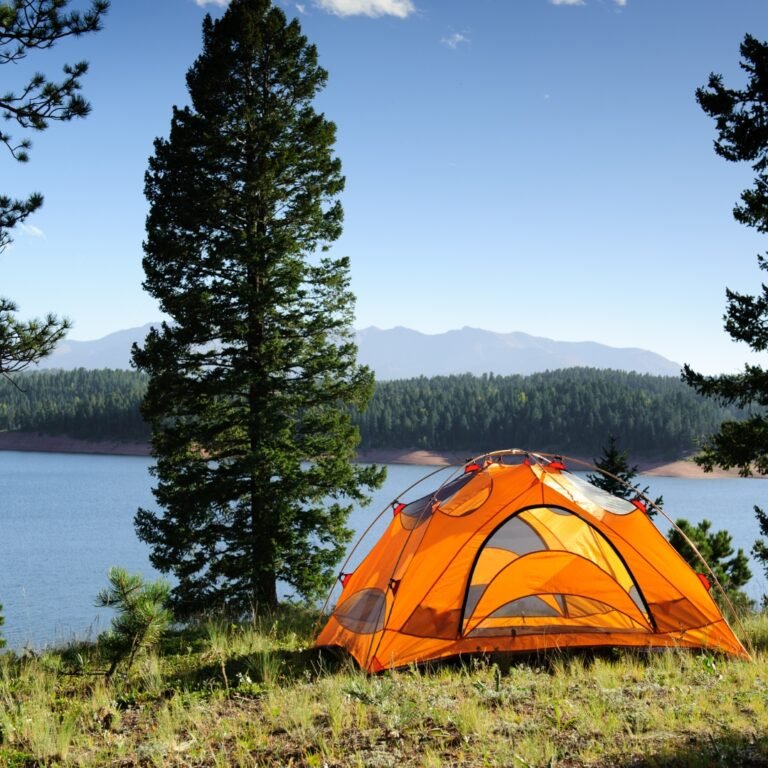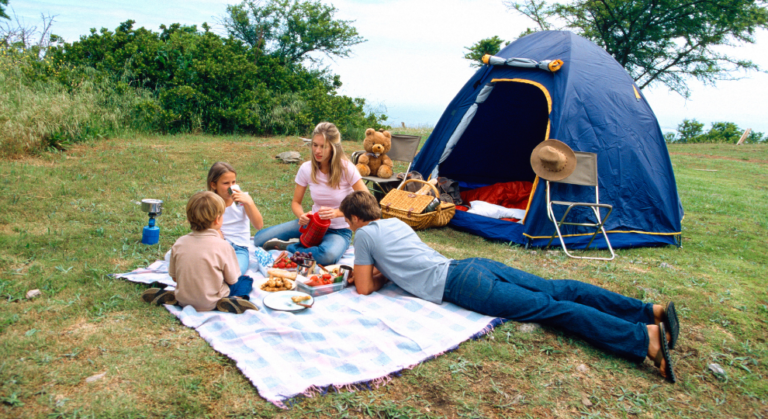Welcome to the great outdoors, where the stars are your ceiling and the earth is your bed. Let’s be honest, a little comfort goes a long way under the vast star filled sky. Whether you’re a solo backpacker venturing into the wild unknown or a happy camper looking for a weekend getaway with friends and family, we’ve got you covered… literally. From ultralight shelters that won’t weigh you down to spacious abodes that feel like a home away from home, our selection is as varied as the landscapes you’ll explore. So, let’s get you equipped; after all, your next adventure is just a tent peg away!
Capacity: Think about how many people will typically sleep in the tent. Tents are often categorized by the number of sleepers they can accommodate, ranging from solo tents to family-sized options. Keep in mind, more space means more comfort, but also more weight.
Seasonality: Tents are designed for different seasons:
Weight: If you’re backpacking, the weight of the tent is crucial. Look for a tent that balances comfort and space with the necessity of keeping your pack light. Remember, the stated weight usually includes the tent, the rainfly, poles, and sometimes, the minimal setup (footprint and poles).
Ease of Setup: Consider how easy the tent is to pitch, especially if you’ll be setting it up in the dark or by yourself. Pop-up tents offer the quickest setup, while traditional pole tents might require more time and effort. Some tents come with color-coded poles and attachments for easier assembly.
Durability and Weather Resistance: Check the materials and construction quality. Look for:
Weight and Portability: For hiking, especially when you’re carrying your gear over long distances, the weight of the tent is critical. Look for lightweight and compact options that won’t weigh you down. Ultralight tents made from advanced materials can offer the best balance between weight and durability but may come at a higher cost.
Weather Resistance and Seasonality: Consider the typical weather conditions you’ll face. A 3-season tent is suitable for most conditions from spring to fall, offering protection against rain and wind while providing ventilation for warmer nights. For winter camping or more severe weather, a 4-season tent with robust construction to withstand snow, wind, and colder temperatures is essential.
Ease of Setup: After a long day of hiking, you’ll appreciate a tent that’s quick and easy to set up. Look for tents with simple, intuitive designs. Features like color-coded poles and clips can make setup faster and reduce hassle, especially in challenging weather or when arriving at camp late.
Comfort and Space: Finally, consider the internal space of the tent, not just for sleeping but also for gear storage and movement. A tent with enough headroom for sitting up, along with vestibules or internal pockets for storing equipment, can make your camping experience much more comfortable. For solo hikers, a 1-person tent might suffice, but for those who appreciate more space or hike with a partner, a 2-person tent often offers a better balance of comfort and weight.
Durability and Weather Resistance: The tent must withstand extreme weather conditions, including heavy snow, high winds, and cold temperatures. Look for a 4-season tent designed with sturdy materials, reinforced seams, and a robust pole structure. A high-quality rainfly and a tent floor with a high hydrostatic head rating are essential for waterproofing and snowproofing.
Weight and Packability: While durability is crucial, climbers also need to minimize weight to conserve energy during ascents. Opt for tents that strike a balance between being lightweight and weather-resistant. Ultralight materials and designs that don’t compromise on strength or protection are ideal, as every ounce matters when you’re scaling heights.
Ease of Setup: In challenging and often precarious conditions, the ability to quickly and easily set up your tent can be a lifesaver. Look for tents that can be pitched efficiently, even in poor weather or on uneven terrain. Freestanding designs are preferable, as they can be moved and adjusted before being securely anchored. Quick-clip attachments and color-coded poles can also speed up the process.
Ventilation: Proper ventilation is critical to prevent condensation inside the tent, which can be a significant problem in cold environments. Look for tents with adjustable ventilation options, such as dual-wall construction with inner mesh layers and outer solid layers that can be adjusted according to conditions. Vents should be positioned to allow airflow while minimizing exposure to snow and rain.
Waterproofing and Weather Resistance: Given the proximity to water bodies, a high level of waterproofing is essential to keep you dry during rain or when near lakes, rivers, or coastal areas. Look for tents with a high-quality rainfly, waterproof floor (with a high hydrostatic head rating), and fully sealed seams. The tent should also offer good resistance to wind, as open water areas can be quite breezy.
Space and Comfort: Fishing trips can involve a lot of gear, and you might spend more time in or around your tent during the day. Opt for a tent with ample space for both occupants and gear. Consider models with vestibules or screened porches where wet gear can be stored or dried out, reducing clutter and moisture inside the sleeping area. Cabin-style tents with vertical walls offer more headroom and livable space, making them ideal for longer stays.
Ease of Setup and Takedown: Efficiency is key, especially when you want to maximize your time fishing rather than fiddling with tent setup. A tent that is quick and easy to pitch allows more flexibility in moving between fishing spots. Pop-up tents or those with simple, intuitive designs can save time and effort, letting you focus on the fishing experience.
Ventilation: Proper airflow is crucial to manage condensation and keep the interior comfortable, especially in humid environments near water. Look for tents with adequate mesh panels or windows, which allow for air circulation without letting in insects. Ventilation features that can be adjusted or covered in case of rain are particularly valuable to maintain airflow in all weather conditions.
Camouflage and Stealth: For many hunting trips, blending in with the environment is crucial. Look for tents with camouflage patterns or colors that match the terrain where you’ll be hunting, whether it’s forest, brush, or grassland. A low-profile tent can also help you remain unseen by wildlife.
Durability and Weather Resistance: Hunting often involves spending extended periods in remote areas under various weather conditions. A durable, 4-season tent capable of withstanding strong winds, heavy rain, and possibly snow is essential. Look for robust construction, high-quality materials, and a design that can endure the rigors of the wilderness.
Space and Comfort: Depending on the length of your hunting trip and the amount of gear you carry, ample space may be necessary. Consider a tent that offers enough room not just for sleeping but also for storing gear, including hunting equipment, clothing, and cooking supplies. A tent with a vestibule or additional storage areas can keep your gear organized and protected from the elements.
Ease of Setup: After a long day of hunting, you’ll appreciate a tent that’s quick and easy to set up. Tents that are straightforward to pitch, with features like color-coded poles and quick-attach rainflies, can save time and reduce hassle. This is especially important if you find yourself setting up camp as daylight fades.
Weather Resistance and Insulation: A 4-season tent is essential for snowboarding trips, as it’s designed to handle heavy snowfall, strong winds, and colder temperatures. Look for tents with a sturdy structure, reinforced poles, and a snow skirt to prevent snow from entering the tent. The materials should offer good insulation, keeping the interior warm and comfortable after a day on the slopes.
Weight and Portability: If you’re hiking into backcountry snowboarding spots, the weight and size of the tent when packed are crucial. Lightweight materials and a compact design make transportation easier, whether you’re carrying it on your back or in a sled. However, balance the need for lightweight design with the durability and insulation required for winter camping.
Ease of Setup: Setting up a tent in cold and possibly windy conditions can be challenging. Look for a tent that can be easily and quickly pitched, even with gloves on. Features like color-coded poles, clip-on attachments, and freestanding designs can simplify the setup process. This reduces the time you’re exposed to the elements and lets you get sheltered more quickly.
Ventilation: Proper ventilation is crucial in winter tents to manage condensation from snow and body moisture, ensuring a dry and comfortable interior. Look for tents with adjustable vents that allow for airflow while keeping snow out. Good ventilation helps in maintaining a comfortable sleeping environment, crucial after a day of snowboarding.
Weight and Packability: One of the most critical factors for trekking is the weight of the tent, as you’ll be carrying it for long periods. Look for lightweight and compact tents that minimize the burden on your back. Ultralight materials like silicone-coated nylon can offer a good balance between durability and weight. Also, consider the packed size of the tent to ensure it fits efficiently in or on your backpack.
Durability and Weather Resistance: The tent should be robust enough to withstand diverse weather conditions. A 3-season tent is usually sufficient for most trekking adventures, designed to handle rain, wind, and mild snow. However, if you’re trekking in more extreme conditions, a 4-season tent may be necessary. Pay attention to the tent’s fabric durability (denier), pole strength, and quality of waterproof coatings.
Ease of Setup and Takedown: After a long day of trekking, you’ll want a tent that’s straightforward to pitch. Freestanding tents are often easier to set up, as they don’t require stakes to stand up, though staking is necessary for windy conditions. Features like color-coded poles, snap-on clips, and less complex structures can simplify the setup and takedown process.
Comfort and Space: While keeping weight to a minimum is crucial, you also need to consider the tent’s interior space. It should be roomy enough to sleep comfortably and store essential gear. Adequate headroom for sitting up, along with vestibules for gear storage outside the sleeping area, can make the tent more livable. Additionally, look for tents with good ventilation systems to reduce condensation and ensure a comfortable night’s sleep.

“When choosing a tent, materials plays a crucial role in determining its performance, durability, and suitability for your next outdoor adventure.”

“Picture this: You, your wife and two kids are planning that dream family camping trip.”
Material on OutDoors Jack is copyrighted. Reproduction without permission is prohibited.
All trademarks property of their respective owners